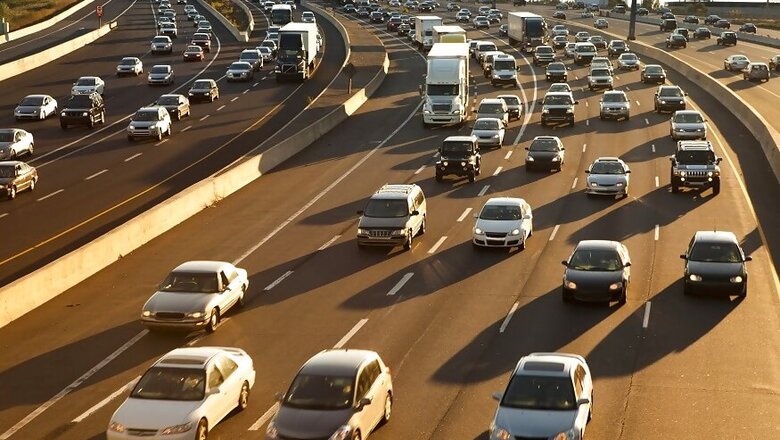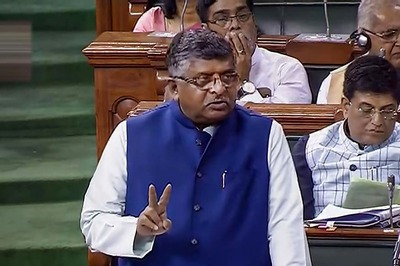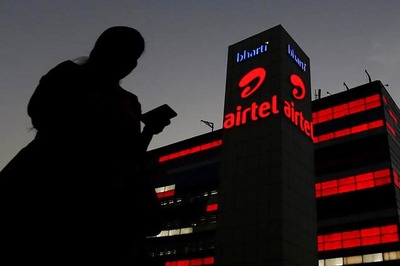
views
New Delhi: India’s automobile industry may be in for some sunshine after months of gloom and doom. According to data released by the Federation of Automobile Dealers Association (FADA), cumulative sales of cars, sport utility vehicles (SUVs), motorcycles and scooters rose by about 5% across vehicle dealerships in July over June this year.
In some states, vehicle sales growth was surprisingly strong: Gujarat saw a 20% jump across categories with passenger vehicles (cars, SUVs and vans) increasing by 51% in July over June and two-wheeler sales surging by 12%. In Haryana, while sales of trucks and buses fell alarmingly, overall vehicle sales were up 18% with both two and three-wheeler categories growing by more than a fifth and PVs up 17% month on month. Sales across Delhi also increased 5% over June across all vehicle categories put together.
This sales surge in July over June is not in line with the perception that the automobile industry is down in the dumps. So let us put these startling numbers in perspective. First of all, this sales growth depicts actual vehicle registrations, something entirely different from the dispatches vehicle makers do to dealerships and which get captured in the monthly data released by the Society of Indian Automobile Manufacturers (SIAM). Second, this growth is month on month, which means in July over June this year, and the year-on-year number for retail sales (and of course, dispatches from factories) continues to be negative at 6%. Third, the 5% overall retail growth is despite the commercial vehicle segment – which means trucks, trailers and buses – continuing to remain negative even in month-on-month retail sales in July.
To put it simply, more cars, scooters and bikes were bought last month from dealerships across the country than in June but not nearly as many as were being bought in July of 2018. A look at data for the last five months – from March to July this year – shows that retail sales have been positive every alternate month over the previous month but they fell the most in June over May. Hence, a sales revival from this steep decline in June is all the more noteworthy. Is the automobile sales slowdown now bottoming out as peak festive season comes nearer?
Typically, the peak season for vehicle sales across India begins with the nine-day Navratri festival in the northern part of the country and then extends well into the New Year as a series of festivals and then year-end discounts attract buyers. But the growth euphoria continues to elude automobile manufacturers, never mind surging sales across dealerships.
“There seems to be an improvement in rural sentiment because of improved monsoon rains in last few weeks, but we have to wait and see the actual retail and customer enquiries to conclude with any finality whether turnaround is real,” Shashank Srivastava, executive director (marketing and sales) at Maruti Suzuki India said. Chairman RC Bhargava said, “One month of sales growth cannot be a ground for making (such a) generalisation.”
Srivastava said that in FADA data, “we find that numbers for Madhya Pradesh, Andhra Pradesh, Telangana and Kerala are missing and therefore any conclusion based on this data may not be entirely correct. It needs a longer time series.”
According to SIAM, combined vehicle dispatches (from factories to dealerships) across all categories of vehicles fell by about a fifth in July, year on year. Dispatches of passenger vehicles fell by almost a third with passenger cars declining by a steep 36% or by more than a third compared to the same month last year. Dispatches of motorcycles fell by almost a fifth and scooters by more than 12% while dispatches of trucks, buses and light commercial vehicles were down by more than 37%.
Such a sales slump is forcing automobile factories to cut production, with July witnessing production decline of around 3 lakh vehicles year on year. This, in turn, means a loss of jobs for contract workers initially but if this slowdown deepens, permanent workers too may be let go. The automobile industry employs close to 40 million people.
SIAM director general Vishnu Mathur said, “The industry needs a comprehensive revival package very quickly so that the festival season can be good. Buyers are expecting some kind of revival package, they expect GST rates to come down. Hence, they are holding purchases”.
But a FADA official pointed out that retail sales were at record low levels in June (second lowest since February in this calendar year) so an uptick was seen in month on month retail sales in July. Also, the monsoon started picking up last month boosting rural purchases.
The official went on to say that there is “some hope for the sector going forward. The festive season should see some growth coming back in vehicle sales, if not in double digits, then perhaps in single digits. We are hoping this (July upsurge) is a bottoming out of the slowdown but we are not sure.”
The FADA official also said that discounts across vehicle dealerships are at an all-time high now, with dealers keen to offload vehicles, and this could be the best time for consumers to buy their dream machines as discounts are as high as they were during the global economic meltdown in 2008-09. And inventories (pile of unsold vehicles) have also reduced over the last few weeks.
Meanwhile, a prolonged slowdown in vehicle dispatches from factories has already taken a toll on this critical industry — automobiles account for almost half the manufacturing GDP of India and account for up to 14% of total GST collections. If half the manufacturing GDP of the country is in doldrums and will result in lower GST collections, the government’s already precarious fiscal math could worsen further in 2019-20. Reviving the automobile sector has been one of the most talked-about initiatives by the government and recent statements from various officials indicate that some revival measures could be in the works.
There are several reasons for the famed Indian automobile sector, fourth largest in the world, to have experienced such an unprecedented slowdown since the festive season last year. First, the uncertainty due to general elections drove people to postpone vehicle purchases. Then, a combination of factors — severe liquidity crunch and a simultaneous increase in ownership costs — worsened sentiment. Severe floods in some key vehicle-buying states this monsoon have also hurt demand.
Then, the impending deadline of mandatory transition to the Bharat Stage VI (BS VI) emission norms has also spooked buyers. To top it all, the face-off between the industry and policy makers over a proposed deadline to convert some vehicle categories to electric from the present internal combustion engine (ICE) technology obviously worsened the situation.
The government has been considering a proposal to ban all ICE-driven two-wheelers under 150cc in the next six years and all three-wheelers within four years. More than three in four vehicles sold in India currently would be impacted if this proposal were to be implemented. Lastly, the increase in axle load for commercial vehicles by 25% recently has meant the load-carrying capacity of vehicles has been increased, which automatically lessens the need to buy new trucks.
Now, all eyes are on the soon-to-commence festive season to assess whether the month-on-month retail sales turnaround is sustainable. If an upsurge is seen for three-four months continuously in retail sales, perhaps the industry would heave a sigh of relief.
(Author is a senior journalist. Views are personal)




















Comments
0 comment